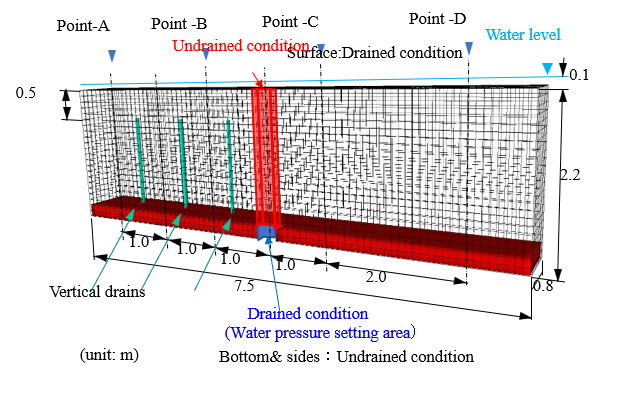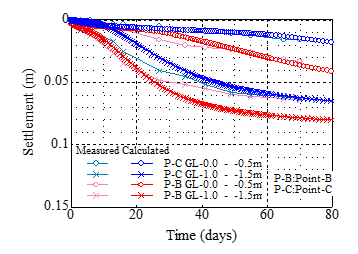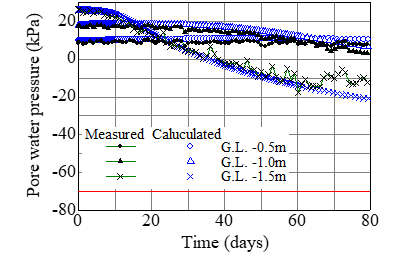Soil-water coupling 3-D finite deformation analysis of a large-scale test for a vacuum consolidation ground treatment
GEOASIA was used to obtain a 3-D analysis of a simulated large-scale test for a vacuum consolidation treatment designed to accelerate consolidation and control delayed settlement in a foundation on reclaimed ground filled with dredged sediment (see Figure 1). The simulation was found to give a good replication of actual test results. Figure2 compares changes in the rates of settlement, and Figures 3 and 4 changes in the pore water pressure in drained and undrained parts of the foundation respectively, at various ground levels. The actual and calculated results match up well in all cases. Figure 5 visualizes how the site will appear after the negative pressure has extended at all levels along the whole length of a drain leading to the early stages of compression in the adjoining soil. To solve a consolidation problem of this kind in which non-consolidated sediment is represented as being subjected to great pressure, the analysis needs to offer four capabilities:
① an elastoplastic constitutive equation supplemented with a concept of super- and sub-loading surfaces to allow the representation of soil behaviors in colloidal states, i. e., with high pore ratios, or pore water pressures exceeding isostatic, prior to the start of consolidation,
② in addition to accurate measurement of settlement and compression over time, the provision of a soil-water coupled finite deformation analysis that can go on tracking the water step by step as calculations proceed,
③ the inclusion of a permeability model correlating with the compression state of the soil, and
④ the capability of including a vertical analysis plane in the model. All of these capabilities are assured in the GEOASIA analysis.




